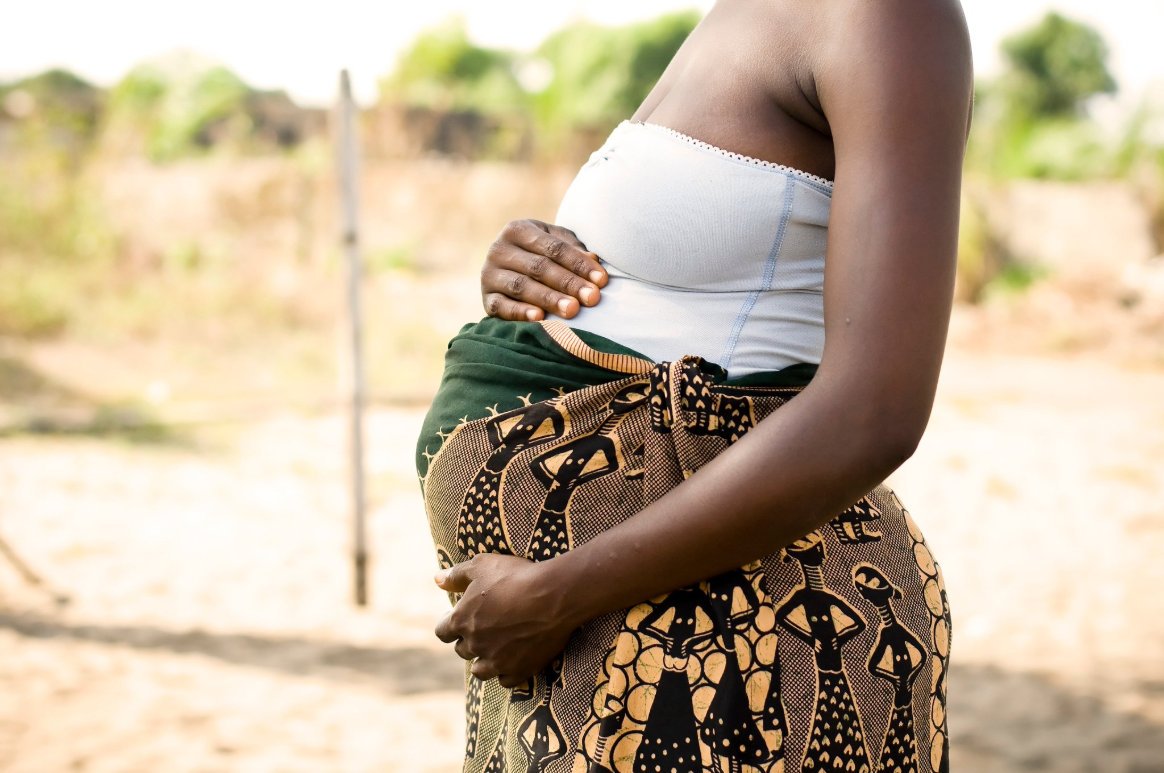Piperaquine Pharmacokinetics in Pregnancy Study Group
Piperaquine Pharmacokinetics in Pregnancy Study Group

Determining the effects of pregnancy on piperaquine pharmacokinetics. The analysis aims to contribute evidence needed to inform recommendations on the use and optimal dosing of piperaquine in pregnant women.
This Study Group’s population pharmacokinetic (PK) analysis on Piperaquine in Pregnancy is currently ongoing. In an extensive systematic literature review, data from a total of 45 published [1-45] and several unpublished clinical trials have been identified. We are now in the process of contacting potential data contributors to share these data. The outcomes will be circulated among participating investigators for feedback and approval and a draft publication is expected by Q2 2021.
Pregnant women are particularly vulnerable to malaria, and malaria in pregnancy is an important cause of maternal and neonatal morbidity and mortality [46]. Physiological changes during pregnancy can affect the pharmacokinetics (PK) of most medicines, often resulting in lower drug concentrations and thus increased risk of therapeutic failure. Artemisinin-based combination therapy (ACT) is the recommended first-line treatment for uncomplicated Plasmodium falciparum malaria in pregnant women in the second and third trimester according to WHO guidelines [47]. The 3-day fixed-dose combination of dihydroartemisinin piperaquine (DP) is one of five ACTs currently recommended by the WHO [47]. DP has excellent efficacy and an acceptable safety profile in pregnant women according to a recently published large clinical trial [49]. DP also appears to be well tolerated and effective as intermittent preventive therapy (IPT) [49,50], the exception being pregnant women on efavirenz-based antiretroviral therapy. However, the reported PK properties of piperaquine in pregnant women are contradictory; some studies report unchanged piperaquine exposures [1,6,28,36], and others report elevated piperaquine clearance resulting in decreased total exposure [21,29] in pregnant women with malaria. A large-scale individual patient data (IPD) meta-analysis is needed to characterise the PK properties of piperaquine in pregnant women and to provide evidence whether dosage adjustments should be considered during pregnancy.
- To investigate the impact of pregnancy on the PK parameters of piperaquine using individual patient data from published and unpublished clinical trials.
- If needed, modelling and simulations to define optimal dosage regimens of piperaquine in pregnant women.
- Study of piperaquine (in any formulation) with the purpose of treating patients with uncomplicated malaria mono- and/or mixedinfection or preventing malaria in healthy subjects (IPT).
- Pregnant and/or non-pregnant women.
- Drug concentration(s) of piperaquine.
- Therapeutic outcome, such as time to recurrent malaria.
- Safety data, and in particular ECG measurements.
After upload to the WWARN Data Repository, WWARN will standardise data sets according to the WWARN Clinical Data Management and Statistical Analysis Plan and pool into a single database of quality-assured individual patient data.
The pooled piperaquine PK database includes the following:
- Demographic variables (e.g. bodyweight, age, ethnicity, pregnancy status, trimester, estimated gestational age and how measured)
- Baseline patient characteristics (e.g. baseline parasite density, fever)
- Dosing and dosing time(s), and whether or not does were supervised
- Co-morbidities (e.g. HIV)
- Concomitant medication/s
- Capillary and/or venous plasma and/or whole blood piperaquine concentration(s) and sampling times
- Sensitivity of the bioanalytical method (i.e. lower limit of quantification of piperaquine concentration measurements)
- Therapeutic outcome data (both efficacy and safety, such as vomiting and ECG)
The Study Group comprises participating investigators who contribute relevant data sets to the pooled analysis. Data sets will remain the property of the investigator. The Study Group collectively makes decisions with respect to including additional studies, data analysis and plans for publication, in line with the WWARN Publication Policy. The Study Group is led by Professor Joel Tarning, Head of the Pharmacometric Modelling Scientific Group of WWARN. Dr Thanaporn Wattanakul is leading the pharmacometric analysis. These individuals coordinate activities including the completion of data collation, plans for analysis, and drafting of publications and reports for group review.
For further information, email Joel Tarning and/or Dr Thanaporn Wattanakul.
A systematic literature review was conducted in mid-2020 and data collation started in November 2020. The pharmacometric modelling is expected to be completed by mid-2021.
[1] Adam I, et al. Pharmacokinetics of piperaquine in pregnant women in Sudan with uncomplicated Plasmodium falciparum malaria. The American journal of tropical medicine and hygiene. 2012;87(1):35-40.
[2] Amaratunga C, et al. Dihydroartemisinin-piperaquine resistance in Plasmodium falciparum malaria in Cambodia: a multisite prospective cohort study. Lancet Infectious Diseases. 2016;16(3):357-65.
[3] Anirudh G, et al. Pharmacokinetics and pharmacodynamics of arterolane maleate following multiple oral doses in adult patients with P. falciparum malaria. Journal of Clinical Pharmacology. 2011;51(11):1519-28.
[4] Annerberg A, et al. A small amount of fat does not affect piperaquine exposure in patients with malaria. Antimicrobial Agents and Chemotherapy. 2011;55(9):3971-6.
[5] Banda CG, et al. Pharmacokinetics of Piperaquine and Safety Profile of Dihydroartemisinin-Piperaquine Coadministered with Antiretroviral Therapy in Malaria-Uninfected HIV-Positive Malawian Adults. Antimicrob Agents Chemother. 2018;62(8).
[6] Benjamin JM, et al. Population pharmacokinetics, tolerability, and safety of dihydroartemisinin-piperaquine and sulfadoxine-pyrimethamine-piperaquine in pregnant and nonpregnant Papua New Guinean women. Antimicrobial Agents and Chemotherapy. 2015;59(7):4260-71.
[7] Conrad MD, et al. Impact of Intermittent Preventive Treatment during Pregnancy on Plasmodium falciparum Drug Resistance-Mediating Polymorphisms in Uganda. Journal of infectious diseases. 2017;216(8):1008‐17.
[8] Funck-Brentano C, et al. Effects of Dihydroartemisinin-Piperaquine Phosphate and Artemether-Lumefantrine on QTc Interval Prolongation. Scientific reports. 2019;9(1):777.
[9] Green JA, et al. Pharmacokinetic interactions between tafenoquine and dihydroartemisinin-piperaquine or artemether-lumefantrine in healthy adult subjects. Antimicrobial Agents and Chemotherapy. 2016;60(12):7321-32.
[10] Hanboonkunupakarn B, et al. Open-label crossover study of primaquine and dihydroartemisinin-piperaquine pharmacokinetics in healthy adult thai subjects. Antimicrobial agents and chemotherapy. 2014;58(12):7340‐6.
[11] Hanboonkunupakarn B, et al. Sequential open-label study of the safety, tolerability, and pharmacokinetic interactions between dihydroartemisinin-piperaquine and mefloquine in healthy Thai adults. Antimicrobial Agents and Chemotherapy. 2019;63(8).
[12] Hung TY, et al. Population pharmacokinetics of piperaquine in adults and children with uncomplicated falciparum or vivax malaria. British Journal of Clinical Pharmacology. 2004;57(3):253-62.
[13] Iseh AL, et al. Pharmacokinetic Characterization of Piperaquine in Nigerian Healthy Volunteers after Co-administration with a Commercial Brand of Moringa Tea. Brit J Pharm Res. 2017;15(4):10.
[14] Isnawati A, et al. Bioequivalence study of dihydroartemisinin-piperaquine (DHP) generic formulation in fixed-dose combination, in healthy Indonesian volunteers. Bali Medical Journal. 2018;7(2):290-5.
[15] Kajubi R, et al. Antiretroviral Therapy With Efavirenz Accentuates Pregnancy-Associated Reduction of Dihydroartemisinin-Piperaquine Exposure During Malaria Chemoprevention. Clinical pharmacology and therapeutics. 2017;102(3):520‐8.
[16] Kobylinski KC, et al. Safety, Pharmacokinetics, and Mosquito-Lethal Effects of Ivermectin in Combination With Dihydroartemisinin-Piperaquine and Primaquine in Healthy Adult Thai Subjects. Clin Pharmacol Ther. 2020;107(5):1221-30.
[17] Leang R, et al. Evidence of plasmodium falciparum malaria multidrug resistance to artemisinin and piperaquine in Western Cambodia: Dihydroartemisinin-piperaquine open-label multicenter clinical assessment. Antimicrobial Agents and Chemotherapy. 2015;59(8):4719-26.
[18] Liu CH, et al. Pharmacokinetics of piperaquine after single and multiple oral administrations in healthy volunteers. Yakugaku Zasshi-J Pharm Soc Jpn. 2007;127(10):1709-14.
[19] Lon C, et al. Efficacy of two versus three-day regimens of dihydroartemisinin-piperaquine for uncomplicated malaria in military personnel in Northern Cambodia: an open-label randomized trial. PLoS ONE. 2014;9(3).
[20] Macintyre F, et al. A randomised, double-blind clinical phase II trial of the efficacy, safety, tolerability and pharmacokinetics of a single dose combination treatment with artefenomel and piperaquine in adults and children with uncomplicated Plasmodium falciparum malaria. BMC medicine. 2017;15(1):181.
[21] Moore BR, et al. Safety, tolerability and pharmacokinetic properties of coadministered azithromycin and piperaquine in pregnant Papua New Guinean women. British Journal of Clinical Pharmacology. 2016;82(1):199-212.
[22] Mytton OT, et al. Electrocardiographic safety evaluation of dihydroartemisinin-piperaquine in the treatment of uncomplicated falciparum malaria. American Journal of Tropical Medicine and Hygiene. 2007;77(3):447-50.
[23] Neena V, et al. Comparison of the safety and efficacy of fixed-dose combination of arterolane maleate and piperaquine phosphate with chloroquine in acute, uncomplicated Plasmodium vivax malaria: a phase III, multicentric, open-label study. Malaria Journal. 2016;15(42).
[24] Nyi Nyi W, et al. Influence of low-fat food on absorption of piperaquine in Myanmar healthy volunteers. Myanmar Health Sciences Research Journal. 2013;25(3):202-6.
[25] Pekyi D, et al. Four artemisinin-based treatments in African pregnant women with malaria. New England Journal of Medicine. 2016;374(10):913 - 27 PMID PM:26962727.
[26] Pluijm RWvd, et al. Determinants of dihydroartemisinin-piperaquine treatment failure in Plasmodium falciparum malaria in Cambodia, Thailand, and Vietnam: a prospective clinical, pharmacological, and genetic study. Lancet Infectious Diseases. 2019;19(9):952-61.
[27] Price RN, et al. Clinical and pharmacological determinants of the therapeutic response to dihydroartemisinin-piperaquine for drug-resistant malaria. Antimicrobial agents and chemotherapy. 2007;51(11):4090‐7.
[28] Rijken MJ, et al. Pharmacokinetics of dihydroartemisinin and piperaquine in pregnant and nonpregnant women with uncomplicated falciparum malaria. Antimicrobial Agents and Chemotherapy. 2011;55(12):5500-6.
[29] Savic RM, et al. Intermittent preventive treatment for malaria in pregnancy: optimization of target concentrations of dihydroartemisinin-piperaquine. Clinical Infectious Diseases. 2018;67(7):1079-88.
[30] Sevene E, et al. Efficacy and safety of dihydroartemisinin-piperaquine for treatment of Plasmodium falciparum uncomplicated malaria in adult patients on antiretroviral therapy in Malawi and Mozambique: An open label non-randomized interventional trial. Malaria Journal. 2019;18(1).
[31] Sim IK, et al. Effects of a high-fat meal on the relative oral bioavailability of piperaquine. Antimicrobial Agents and Chemotherapy. 2005;49(6):2407-11.
[32] Smithuis F, et al. Efficacy and effectiveness of dihydroartemisinin-piperaquine versus artesunate-mefloquine in falciparum malaria: an open-label randomised comparison. Lancet (london, england). 2006;367(9528):2075‐85.
[33] Staehli Hodel EM, et al. Population pharmacokinetics of mefloquine, piperaquine and artemether-lumefantrine in Cambodian and Tanzanian malaria patients. Malaria journal. 2013;12:235.
[34] Tarning J, et al. Population pharmacokinetics of piperaquine after two different treatment regimens with dihydroartemisinm-piperaquine in patients with Plasmodium falciparum malaria in Thailand. Antimicrobial Agents and Chemotherapy. 2008;52(3):1052-61.
[35] Tarning J, et al. Population pharmacokinetics and antimalarial pharmacodynamics of piperaquine in patients with Plasmodium vivax Malaria in Thailand. CPT: Pharmacometrics and Systems Pharmacology. 2014;3 (8):(e132).
[36] Trinh Ngoc H, et al. The influence of food on the pharmacokinetics of piperaquine in healthy Vietnamese volunteers. Acta Tropica. 2008;107(2):145-9.
[37] van der Pluijm RW, et al. Triple artemisinin-based combination therapies versus artemisinin-based combination therapies for uncomplicated Plasmodium falciparum malaria: a multicentre, open-label, randomised clinical trial. Lancet. 2020;395(10233):1345-60.
[38] Vanachayangkul P, et al. Piperaquine Population Pharmacokinetics and Cardiac Safety in Cambodia. Antimicrob Agents Chemother. 2017;61(5).
[39] von Seidlein L, et al. Combining antimalarial drugs and vaccine for malaria elimination campaigns: a randomized safety and immunogenicity trial of RTS,S/AS01 administered with dihydroartemisinin, piperaquine, and primaquine in healthy Thai adult volunteers. Human Vaccines Immunother. 2020;16(1):33-41.
[40] Wallender E, et al. Predicting optimal dihydroartemisinin-piperaquine regimens to prevent malaria during pregnancy for human immunodeficiency virus-infected women receiving efavirenz. Journal of Infectious Diseases. 2018;217(6):964-73.
[41] Wallender E, et al. Modeling Prevention of Malaria and Selection of Drug Resistance with Different Dosing Schedules of Dihydroartemisinin-Piperaquine Preventive Therapy during Pregnancy in Uganda. Antimicrobial Agents and Chemotherapy. 2019;63(2):11.
[42] Wattanakul T, et al. Cardiovascular safety and population pharmacokinetic properties of piperaquine in African patients with uncomplicated falciparum malaria - a pooled multicentre analysis. Antimicrob Agents Chemother. 2020.
[43] Yamin Ko K, et al. Pharmacokinetics of piperaquine in Myanmar healthy volunteers after oral administration of two fixed-dose dihydroartemisinin-piperaquine combinations. Myanmar Health Sciences Research Journal. 2013;25(3):219-24.
[44] Ahmed R, et al. Efficacy and safety of intermittent preventive treatment and intermittent screening and treatment versus single screening and treatment with dihydroartemisinin–piperaquine for the control of malaria in pregnancy in Indonesia: a cluster-randomised, open-label, superiority trial. The Lancet Infectious Diseases. 2019;19(9):973-87.
[45] Desai M, et al. Intermittent screening and treatment or intermittent preventive treatment with dihydroartemisinin-piperaquine versus intermittent preventive treatment with sulfadoxine-pyrimethamine for the control of malaria during pregnancy in western Kenya: an open-label, three-group, randomised controlled superiority trial. Lancet. 2015;386(10012):2507-19.
[46] Dellicour S, et al. Quantifying the number of pregnancies at risk of malaria in 2007: a demographic study. PLoS Med 2010;7:e1000221
[47] World Health Organization. Guidelines for the treatment of malaria. - 3rd edition. Geneva: World Health Organization; 2015
[48] The PREGACT Study Group. Four Artemisinin-Based Treatments in African Pregnant Women with Malaria. N Engl J Med 2016;374:913–27
[49] Kakuru A, et al. Dihydroartemisinin-Piperaquine for the Prevention of Malaria in Pregnancy. N Engl J Med. 2016 Mar 10;374(10):928-39
[50] Gutman J, et al. Safety, tolerability, and efficacy of repeated doses of dihydroartemisinin-piperaquine for prevention and treatment of malaria: a systematic review and meta-analysis. Lancet Infect Dis. 2017 Feb;17(2):184-193

